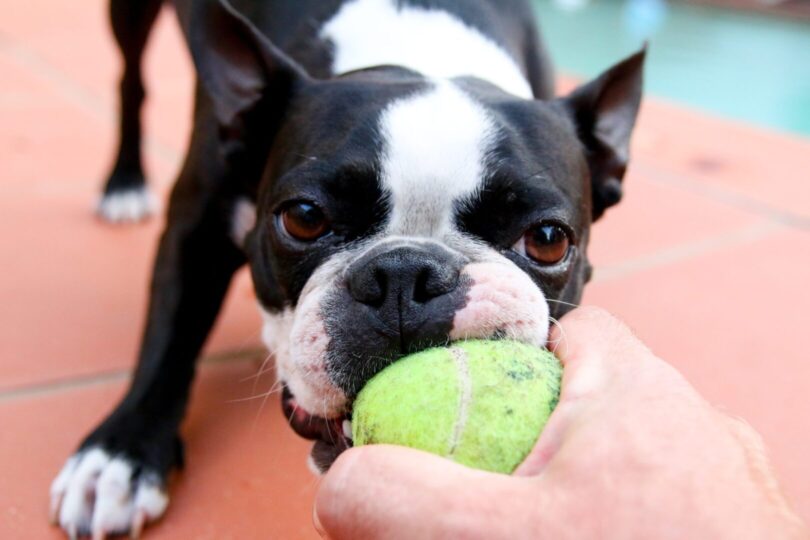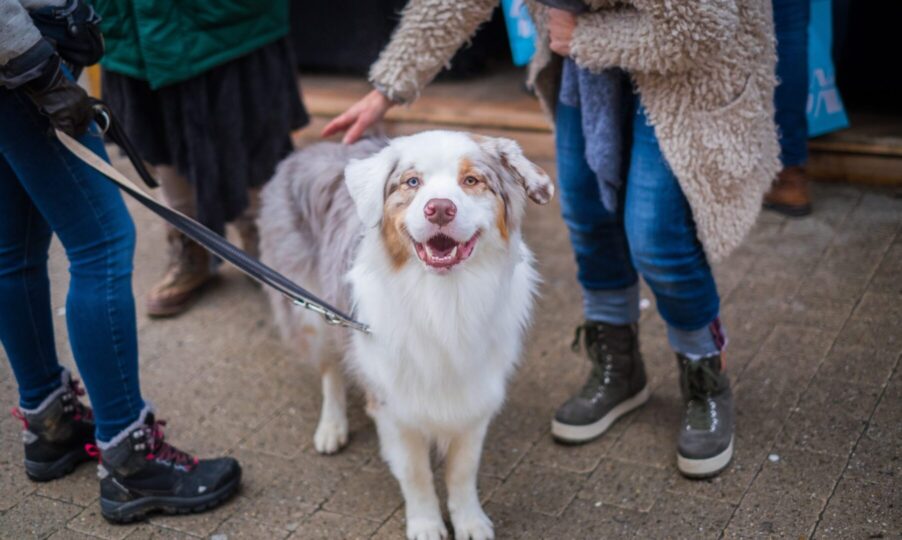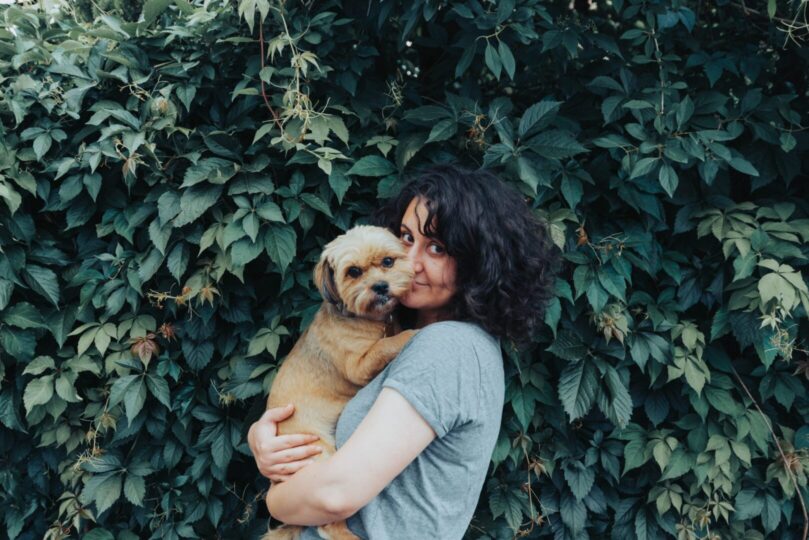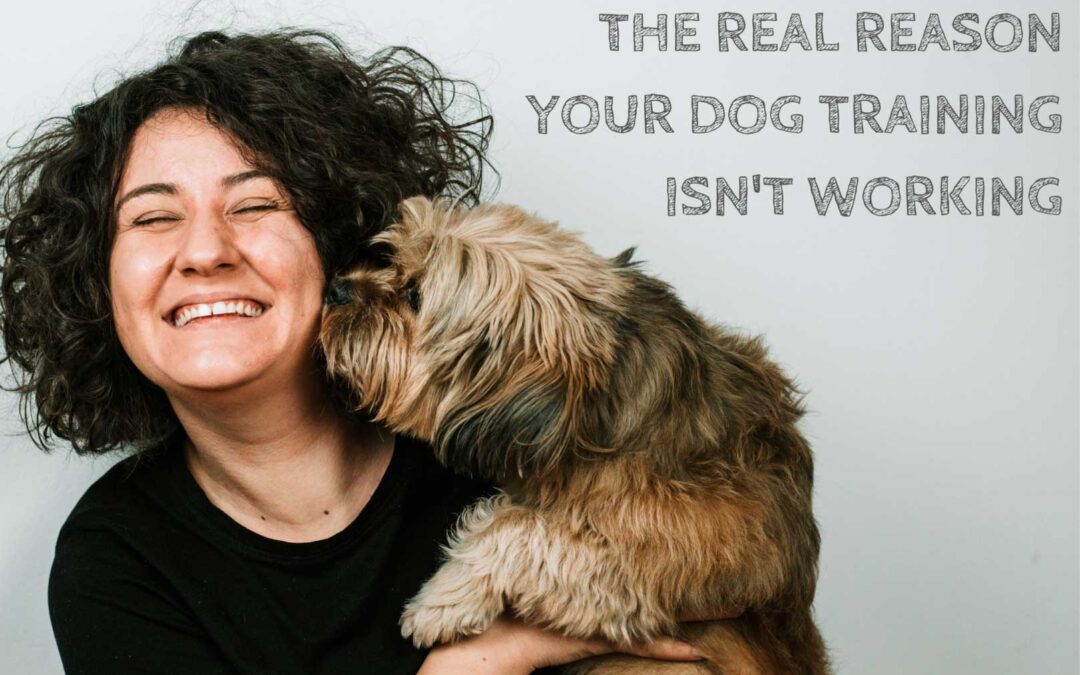You’ve done your research, you’ve settled on a dog trainer, and you can’t wait to finally repair your relationship with your fluffy friend. You feel truly hopeful for the first time in forever.
Only, a few weeks or months down the line and you’re just not seeing the progress you wanted. Buster is still barking/biting/peeing on the floor/stealing food off the counter and you’re wondering whether the whole thing is a colossal waste of time.
So what gives? Is it a sign your trainer doesn’t know what they’re doing? Is your dog a lost cause after all?
Or is there something else going on?
Often, when it feels like your dog training is going badly, the problem isn’t the trainer…or your dog. It’s you.
And that’s okay. Because this isn’t easy (if it was, I’d be out of a job, right?): when you start your dog training journey there’s just as big a learning curve for you as there is for your pup.
The good news is, when you recognize where you might be going wrong, you can take the steps you need to make your dog training actually work — and create the kind of dog/human relationship you’ve been dreaming of.
So let’s look at the five most common mistakes owners make when working with a dog trainer and how to fix them:
1. You start freestyling.

I’ve heard it soooo many times: “we did exactly what you told us to do but it didn’t work.”
Only, when I dig a bit deeper, it turns out my clients haven’t done exactly what I told them — they’ve put their own spin on things, tweaked the lesson, or started free styling their way through the training.
Which is why things aren’t going so well. I promise, if you do things the way I’ve taught you, it will work!
2. You don’t put in the time.
I get it: you’re busy. And while your initial excitement made it easy for you to carve out time for dog training in the beginning, you’re finding it harder and harder to put in the hours.
But here’s the thing: if you don’t make the time for your pup’s training, you’re going to have to find the time to shop for new shoes when your dog chews up your new sneakers, the time to clear up the puddles of urine from the kitchen floor, or the time spent in the ER getting stitches after your pet’s anxiety turns to aggression.
So, no matter how busy you are, make time for your training. You, your pup, and your new sneakers deserve it!
3. You’re not being honest with your trainer.
Your dog trainer CAN help you — but only if they know what they’re dealing with.
When I get to a client’s house for an appointment, I assume they’ve been doing the work, and I plan the session to fit the stage they’re at with their training.
But, if they haven’t been keeping up with the practices I’ve set, or they’ve hit a roadblock they haven’t told me about, I might be asking their doggo to run before they can walk. I might be giving advice that just isn’t appropriate for where they are with their training.
So, if you’re having problems with any aspect of your session, don’t be afraid to speak up. Your trainer is there to help, not to judge.
When we’re all honest with each other, when we have open lines of communication, I can be sure you’re getting the exact help and advice you need.

4. You’re not asking questions.
“We just didn’t think it was that important.” — Another phrase dog trainers hear A LOT.
If your dog trainer asks you to do something that seems a bit left field, it can be tempting to skip it or try something else.
But I promise you, as a trainer, nothing I tell you to do is there for the fuck of it. There’s a solid, logical reason behind literally every single thing I advise.
So, if you can’t figure out why the hell I’m asking you to do something, or if something sounds weird or counterintuitive, please just ask! There is absolutely nothing wrong with asking questions; I (and any other trainer who knows what they’re doing!) will be happy to clarify the logic behind the training methods we use.
5. You ignore your instincts.
Okay, despite what I’ve just said, it might be the case that you aren’t the problem.
For example, if your trainer is telling you to do things that genuinely upset you — you don’t have to do them. If they’re telling you that you have to use punishment tools or do anything that you think will hurt your pup, you can (and should!) find another trainer.
Because there are a million ways to train; nothing is exclusive…even my training. There’s no right way — ultimately it’s about finding the way that works for you and your dog.

So, if you’ve been working with a trainer and your head and heart are telling you that something’s off, that they aren’t the right choice for you and your family, it’s okay to listen to your instincts and find a trainer that’s a better fit.
Think you need to find a dog trainer that’s a great fit for you and your pet? I’d love to give you the tools and the support you need to create the relaxed, happy, relationship you and your dog deserve. Find out how I can help.

